In years past, U.S. Steel’s South Works plant in South Chicago gushed flame and created towering piles of slag as it forged the steel that built skyscrapers around Chicago and across the country. Nowadays, South Works is mostly empty, deserted land. But developers hope to turn it into a mixed-income development that they say will inject new vitality into this now struggling neighborhood.
The private company spearheading the project and the city’s Department of Planning and Development are at odds over how to structure the project. And the economy has thrown a wrench in long-standing plans. But residents and neighborhood leaders still hope that new homes and businesses will soon thrive on what is now empty land, home only to the ghosts of the steel mill.
“I remember the U.S. Steel’s South Works plant, it was a big thing in the neighborhood,” said former plant worker Jose Lopez. “People came from all over the city to work there.”
Many local residents, whose descendants still live in South Chicago today, built the many buildings in the U.S. Steel complex. Now the land surrounding the plant is largely infill composed of layers of slag, a byproduct of steel production.
In its heyday a half-century ago, U.S. Steel employed approximately 25,000 workers at the South Chicago plant, making it the area’s largest employer.
A website run by the Southeast Historical Society describes the plant’s socio-economic importance: “The U.S. Steel Company played a significant role in the lives of the people of South Chicago while it was in operation. The community’s economy evolved because of it, and revolved around it. Bringing so many people to the area, and providing so many jobs, it populated the community.”
To see images of the old U.S. Steel plant and hear the stories of retired workers, watch this YouTube video.
But starting in the 1970s and accelerating in the 1980s, the U.S. steel industry endured a sudden collapse that threw many out of work. U.S. Steel and other American steel companies that still depended upon large numbers of older, inefficient plants failed to withstand the combination of a decline in demand and the rise of international competition, according to the Encyclopedia of Chicago. In 1992 the massive U.S. Steel plant closed down.
“I was upset when the plant closed down. Many people lost their jobs, including myself,” said Jorge Sanchez, a former plant employee.
Although the factory has been shuttered for 17 years, U.S. Steel still owns many vacant residential lots in the neighborhood. When the plant closed, U.S. Steel put the facility and the surrounding land up for sale. Eventually developers Westrum Development Company, McCaffery Interests and Lubert Adler partnered with U.S. Steel to form the Southworks Development LLC. The new company hired the world–renowned architects Skidmore, Owings and Merrill (SOM) and Sasaki Associates to design a new development to replace the old steel mill.
(Southworks Development LLC did not respond to numerous requests for comment for this story.)
According to the Area Chicago Web site, South Works is known as a Planned Development, designated by the city’s zoning guide as a “development scheme for a large, multi-lot area that is normally controlled by one party.”
South Works planners have stated they want to see the plot broken down into four or five separate sections or neighborhood areas. In order to finance the project, the developers have said they need up to 30,000 residential units mixed between low-, mid- and high-rise buildings. But the Planning Department would rather have a lower density development with about 5,000 to 6,000 units, according to the Area Chicago Web site. Currently, the South Chicago population is more than 40,000.
The Southeast Historical Society is proposing a museum or park be created to commemorate the steel industry and the workers who made this area one of the most important steel-making locations in the world.
”The mill also had a tremendous effect on the local economy. Bars, restaurants, stores and more had good or bad years that mirrored the success or lack of success of area mills,” said historical society director Rod Sellers. “What I remember the most was driving past the mill at night when they were pouring steel and the orange glow that lit up the area surrounding the mill.”
To view images and more information on the old U.S. Steel plant, check out this piece from Forgotten Chicago or this article from the Southeast Historical Society.
Many Southeast Side Chicago locals are hoping that new development on the site of U.S. Steel South Works will help them re-live the past and bring business to the neighborhood.
“I would enjoy seeing the U.S. Steel South Works become a shining light in the neighborhood, like it was before,” said Sanchez.
Related: Check out Michael Puente’s recent look at the charter school debate and other issues currently facing South Chicago from WBEZ-FM/Chicago Public Radio.







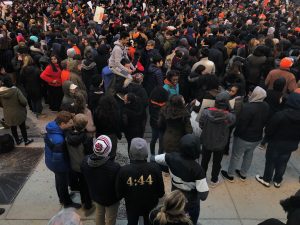
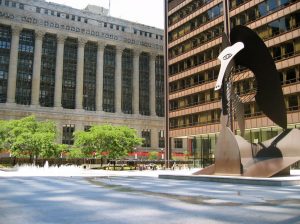

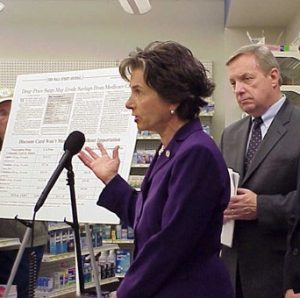



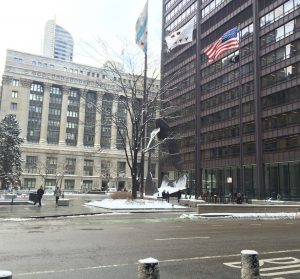
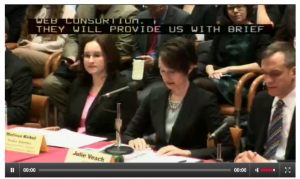
Be First to Comment